Interesting research is being carried out in University College Dublin (UCD) exploring the potential to extract nutrients from wool which, in turn, can be used as fertiliser.
The study of literature by Gary Gillespie, Kevin McDonnell and Oyinlola Dada is very timely given that sheep farmers are becoming increasingly disillusioned by the low value of wool in recent years and fertiliser prices are at record levels.
The investigations to date show that there is positive potential to obtain almost 16% of the nitrogen applied to cereal crops in Ireland or enough nitrogen to fertilise every hectare of winter oats sown.
Or if looked at in another manner, if nutrients were extracted from the entire national wool clip, it would deliver over 1,700t of pure nitrogen, equivalent to the nitrogen in 22,000t of CAN fertiliser.
The research was started with two main aims – to investigate if there is potential to obtain fertiliser for use on cereal crops from alternative sustainable sources and at the same time investigate if extracting nutrients from wool can improve the economics of shearing and marketing wool for sheep producers.
Hydrolysis
The process viewed as being most suitable to extract nutrients from wool is known as hydrolysis.
Gillespie explains that hydrolysis uses high temperatures and substances such as acids, bases and enzymes to break down the protein and leave nutrients readily available for extraction.
“The greatest potential in an Irish context seems to be in using acids or bases.
“Enzymes are an option but these may render the nutrients extracted not suitable for use in an organic system and this is an area where we see significant potential given the high targets set to increase the area of lands farmed organically.
Nutrients obtained from sheep’s wool are natural and would be perfect for using in crops
“Nutrients obtained from sheep’s wool are natural and would be perfect for using in crops, such as organic milling wheat, where in challenging years for growth it is difficult to produce grain with the desired protein levels.”
We have to look at all the options available as we have seen the consequences the war in Ukraine has had on the global supply of fertiliser and price.
Reducing reliance
Gillespie says Ireland needs to be in a position whereby there are options available to reduce our reliance on synthetic fertilisers.
Practices such as growing break crops that capture nutrients/enhance organic matter or using sheep to recycle nutrients via grazing catch crops will provide opportunities.
“It is disgraceful really when you think about it that we have a wonderful sustainable product in wool that has such a low value.
“If there is potential to increase the value for sheep farmers and, at the same time deliver a sustainable source of fertiliser, then it is positive for the sheep and tillage sectors.”
At current fertiliser prices, a process such as hydrolysis could return a value of €2 to €2.50 for an average sheep fleece with the value potentially higher if nutrients were obtained for organic use.
Gillespie explains that the two main nutrients contained in wool are sulphur and nitrogen, while there are also low levels of zinc, copper, iron, potassium and phosphorus, along with other nutrients in small quantities.
He says that there is a growing demand in Irish production systems for sulphur and that this can also be another source of added value.
Next steps
The next steps include investigating if there are differences in the quantities of nutrients contained in wool from different breeds or where sheep are grazed on different soil types or different regions.
“Studies carried out in other countries show that the land type or region where sheep are grazed has an influence on the nutrients in wool.
“For example, sheep grazed close to heavily industrialised areas in eastern Europe had higher levels of heavy metals in their fleece so we need to explore this further.”
Value in composting
Studies such as this one carried out in UCD offer hope to the sheep sector but it will take time for the industry to react.
It highlights that there is a significant nutrient value in wool, with typical values of 100g to 150g of nitrogen in 1kg of wool.
As such, sheep producers with low-value hill wool or wool which is of poor quality can look at the option of composting wool in the medium term to recycle nutrients.
Images of wool being dumped or worse still producers trying to burn wool, which has natural fire-retardant properties, should not be appearing in 2022.
The Galway Wool Co-op is heading into its second season with plenty of confidence.
The group, which has over 40 members, has teamed up with a second buyer for the 2022 wool clip, with Woolow joining Donegal Yarn.
The price paid to the co-op has been agreed at €2.50/kg and secretary Blatnaid Gallagher reports that the producer price will increase by 10% this year, with a lower levy retained due primarily to some costs of establishment only arising in year one.
Interest
Gallagher said: “We had lots of interest again this year and are delighted Donegal Yarn is keen to continue the positive relationship and their support of native Irish wool.
“An expression of interest from Woolow has also come to fruition and we are excited to see wool from the Galway sheep breed feature in a new range of sustainable interiors.”
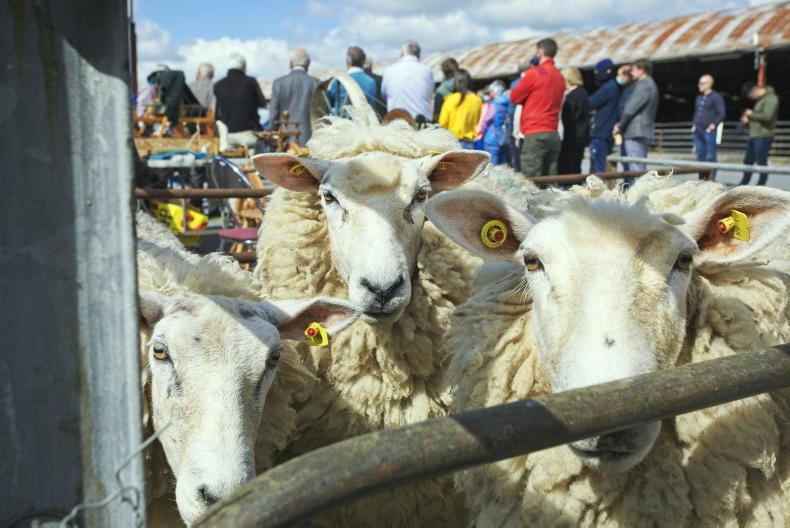
Galway Sheep awaiting hand shearing at Galway Wool Co-op wool collection in 2021 at Athenry Mart, Co Galway. \ David Ruffles
Gallagher said the co-op is now turning its attention to educating producers on wool quality characteristics.
“We are holding the Galway Wool Meitheal again in Athenry Mart on 9 July. Educating ourselves on the finer aspects of Galway Wool is our focus for 2022.
“It includes a fleece competition where the producer of the best fleece will win a Magee 1866 wool jacket worth €500.”
Last year
The 2021 wool clip totalling in the region of 5,300kg was collected at last year’s event, which also includes demonstrations on shearing and hand weaving.
“Longer term, we want to establish breeding programmes that maintain the high integrity in which Galway wool is regarded.”
Producers possessing Galway Sheep and interested in becoming a member can find further information at www.galwaywool.ie.
Some green shoots for sheep wool insulation
Vincent Pierce, managing director of Sheep Wool Insulation Ltd, reports that the company has witnessed an increase in demand for sheep wool insulation in recent months.
He says the higher level of interest is resulting from an awareness of the environmental benefits of using insulation made from wool rather than synthetic fibres.
“We are seeing a fair bit of interest in retrofits. Some of these customers have spent much more time at home over the last two years and are looking at ways of making their homes and now often places of work more comfortable and energy-efficient.”
The reality is that sheep wool insulation has been regarded as an expensive product
Vincent says the market is still relatively low and represents an end use for about 1% of the wool the company handles. However, this has increased from a standing start and with continued support and promotion of the sustainable benefits of using wool insulation there is an opportunity to grow market share.
“The reality is that sheep wool insulation has been regarded as an expensive product when judged solely on cost but this view is changing. The lower value of wool means that we have been using Irish and British wool in the manufacture of wool insulation which is an added benefit.”
He is optimistic, however, that sustainably produced products will continue to gain a greater foothold in the market and the company is investing in new facilities for the wool insulation business.
2022 sale prospects
The prospects for the general wool trade is, in contrast, pessimistic. “The latest lockdowns in China have essentially closed off the trade again. Buyers have not come out of their shell and that is not even taking into account the effect of rising freight costs.
“I was more optimistic in February but now I don’t see any great change in the trade this year or next year.”
The majority of Irish wool handled by Laurence Pierce (Wool Merchants) Ltd has been destined for the UK market in recent times through its parent company, Curtis Wool.
“Up to three or four months ago, we still had about 1,000t of wool on hand.
“There is only so long you can store it in the hope of the market lifting and it has been entering the trade in the UK or undergoing further processing for the carpet trade or for export from there.”
Interesting research is being carried out in University College Dublin (UCD) exploring the potential to extract nutrients from wool which, in turn, can be used as fertiliser.
The study of literature by Gary Gillespie, Kevin McDonnell and Oyinlola Dada is very timely given that sheep farmers are becoming increasingly disillusioned by the low value of wool in recent years and fertiliser prices are at record levels.
The investigations to date show that there is positive potential to obtain almost 16% of the nitrogen applied to cereal crops in Ireland or enough nitrogen to fertilise every hectare of winter oats sown.
Or if looked at in another manner, if nutrients were extracted from the entire national wool clip, it would deliver over 1,700t of pure nitrogen, equivalent to the nitrogen in 22,000t of CAN fertiliser.
The research was started with two main aims – to investigate if there is potential to obtain fertiliser for use on cereal crops from alternative sustainable sources and at the same time investigate if extracting nutrients from wool can improve the economics of shearing and marketing wool for sheep producers.
Hydrolysis
The process viewed as being most suitable to extract nutrients from wool is known as hydrolysis.
Gillespie explains that hydrolysis uses high temperatures and substances such as acids, bases and enzymes to break down the protein and leave nutrients readily available for extraction.
“The greatest potential in an Irish context seems to be in using acids or bases.
“Enzymes are an option but these may render the nutrients extracted not suitable for use in an organic system and this is an area where we see significant potential given the high targets set to increase the area of lands farmed organically.
Nutrients obtained from sheep’s wool are natural and would be perfect for using in crops
“Nutrients obtained from sheep’s wool are natural and would be perfect for using in crops, such as organic milling wheat, where in challenging years for growth it is difficult to produce grain with the desired protein levels.”
We have to look at all the options available as we have seen the consequences the war in Ukraine has had on the global supply of fertiliser and price.
Reducing reliance
Gillespie says Ireland needs to be in a position whereby there are options available to reduce our reliance on synthetic fertilisers.
Practices such as growing break crops that capture nutrients/enhance organic matter or using sheep to recycle nutrients via grazing catch crops will provide opportunities.
“It is disgraceful really when you think about it that we have a wonderful sustainable product in wool that has such a low value.
“If there is potential to increase the value for sheep farmers and, at the same time deliver a sustainable source of fertiliser, then it is positive for the sheep and tillage sectors.”
At current fertiliser prices, a process such as hydrolysis could return a value of €2 to €2.50 for an average sheep fleece with the value potentially higher if nutrients were obtained for organic use.
Gillespie explains that the two main nutrients contained in wool are sulphur and nitrogen, while there are also low levels of zinc, copper, iron, potassium and phosphorus, along with other nutrients in small quantities.
He says that there is a growing demand in Irish production systems for sulphur and that this can also be another source of added value.
Next steps
The next steps include investigating if there are differences in the quantities of nutrients contained in wool from different breeds or where sheep are grazed on different soil types or different regions.
“Studies carried out in other countries show that the land type or region where sheep are grazed has an influence on the nutrients in wool.
“For example, sheep grazed close to heavily industrialised areas in eastern Europe had higher levels of heavy metals in their fleece so we need to explore this further.”
Value in composting
Studies such as this one carried out in UCD offer hope to the sheep sector but it will take time for the industry to react.
It highlights that there is a significant nutrient value in wool, with typical values of 100g to 150g of nitrogen in 1kg of wool.
As such, sheep producers with low-value hill wool or wool which is of poor quality can look at the option of composting wool in the medium term to recycle nutrients.
Images of wool being dumped or worse still producers trying to burn wool, which has natural fire-retardant properties, should not be appearing in 2022.
The Galway Wool Co-op is heading into its second season with plenty of confidence.
The group, which has over 40 members, has teamed up with a second buyer for the 2022 wool clip, with Woolow joining Donegal Yarn.
The price paid to the co-op has been agreed at €2.50/kg and secretary Blatnaid Gallagher reports that the producer price will increase by 10% this year, with a lower levy retained due primarily to some costs of establishment only arising in year one.
Interest
Gallagher said: “We had lots of interest again this year and are delighted Donegal Yarn is keen to continue the positive relationship and their support of native Irish wool.
“An expression of interest from Woolow has also come to fruition and we are excited to see wool from the Galway sheep breed feature in a new range of sustainable interiors.”

Galway Sheep awaiting hand shearing at Galway Wool Co-op wool collection in 2021 at Athenry Mart, Co Galway. \ David Ruffles
Gallagher said the co-op is now turning its attention to educating producers on wool quality characteristics.
“We are holding the Galway Wool Meitheal again in Athenry Mart on 9 July. Educating ourselves on the finer aspects of Galway Wool is our focus for 2022.
“It includes a fleece competition where the producer of the best fleece will win a Magee 1866 wool jacket worth €500.”
Last year
The 2021 wool clip totalling in the region of 5,300kg was collected at last year’s event, which also includes demonstrations on shearing and hand weaving.
“Longer term, we want to establish breeding programmes that maintain the high integrity in which Galway wool is regarded.”
Producers possessing Galway Sheep and interested in becoming a member can find further information at www.galwaywool.ie.
Some green shoots for sheep wool insulation
Vincent Pierce, managing director of Sheep Wool Insulation Ltd, reports that the company has witnessed an increase in demand for sheep wool insulation in recent months.
He says the higher level of interest is resulting from an awareness of the environmental benefits of using insulation made from wool rather than synthetic fibres.
“We are seeing a fair bit of interest in retrofits. Some of these customers have spent much more time at home over the last two years and are looking at ways of making their homes and now often places of work more comfortable and energy-efficient.”
The reality is that sheep wool insulation has been regarded as an expensive product
Vincent says the market is still relatively low and represents an end use for about 1% of the wool the company handles. However, this has increased from a standing start and with continued support and promotion of the sustainable benefits of using wool insulation there is an opportunity to grow market share.
“The reality is that sheep wool insulation has been regarded as an expensive product when judged solely on cost but this view is changing. The lower value of wool means that we have been using Irish and British wool in the manufacture of wool insulation which is an added benefit.”
He is optimistic, however, that sustainably produced products will continue to gain a greater foothold in the market and the company is investing in new facilities for the wool insulation business.
2022 sale prospects
The prospects for the general wool trade is, in contrast, pessimistic. “The latest lockdowns in China have essentially closed off the trade again. Buyers have not come out of their shell and that is not even taking into account the effect of rising freight costs.
“I was more optimistic in February but now I don’t see any great change in the trade this year or next year.”
The majority of Irish wool handled by Laurence Pierce (Wool Merchants) Ltd has been destined for the UK market in recent times through its parent company, Curtis Wool.
“Up to three or four months ago, we still had about 1,000t of wool on hand.
“There is only so long you can store it in the hope of the market lifting and it has been entering the trade in the UK or undergoing further processing for the carpet trade or for export from there.”




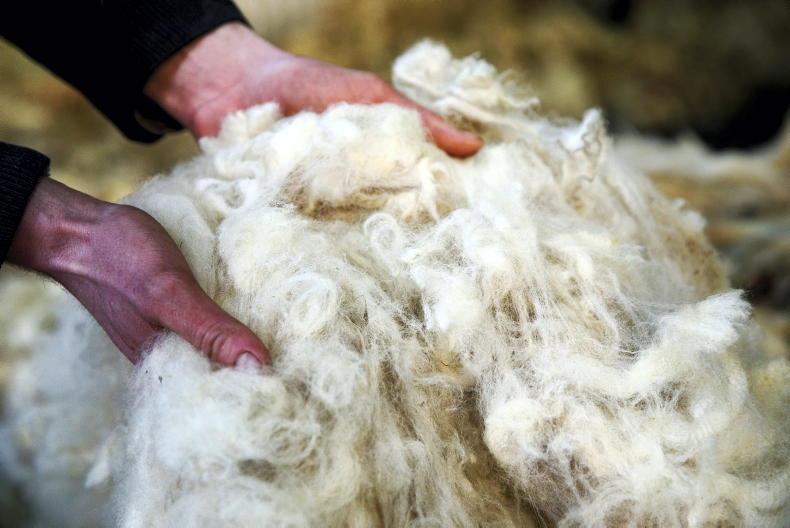
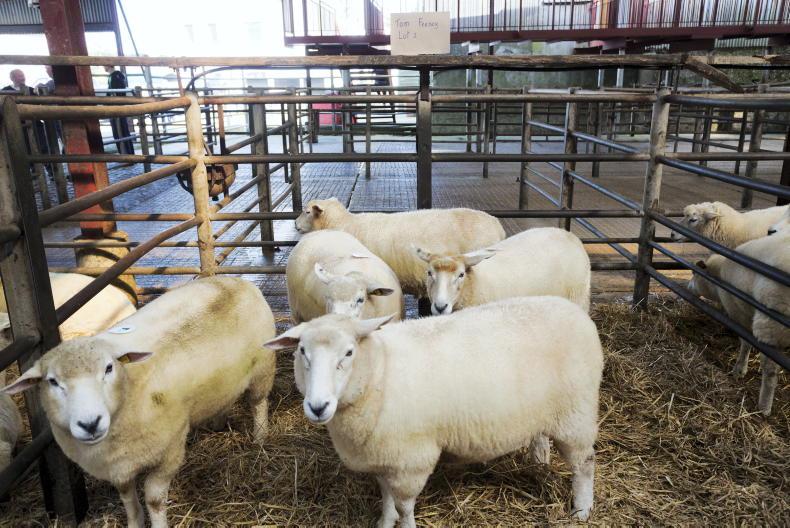
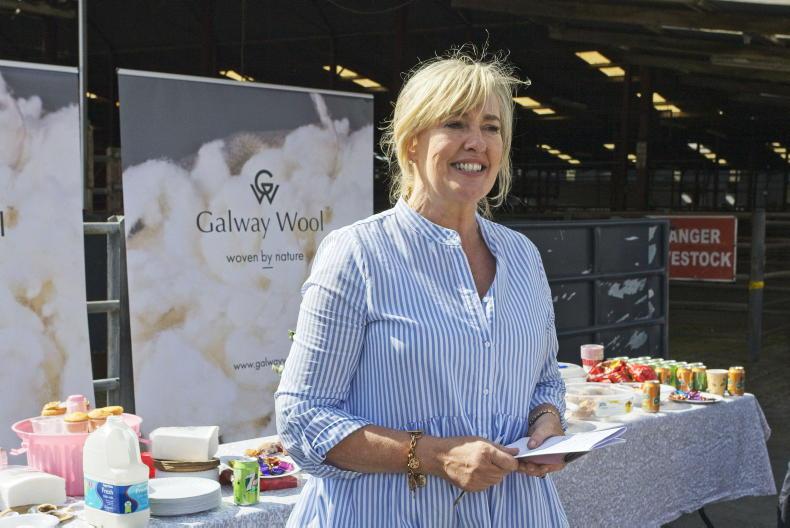

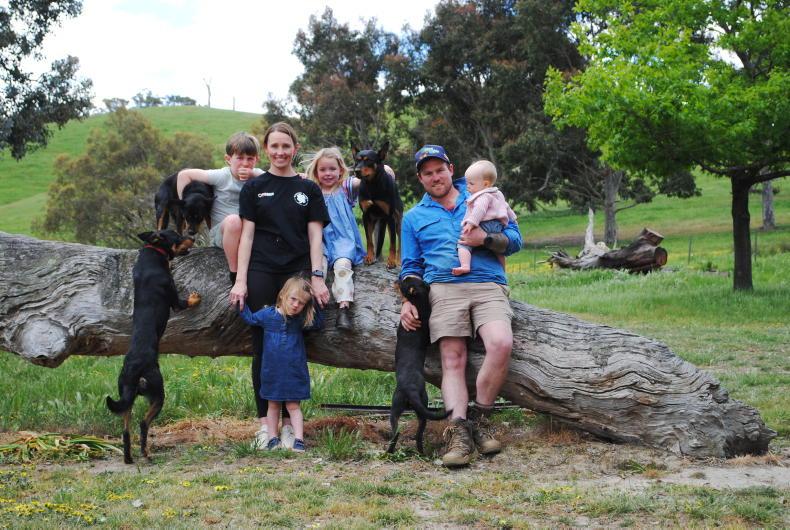

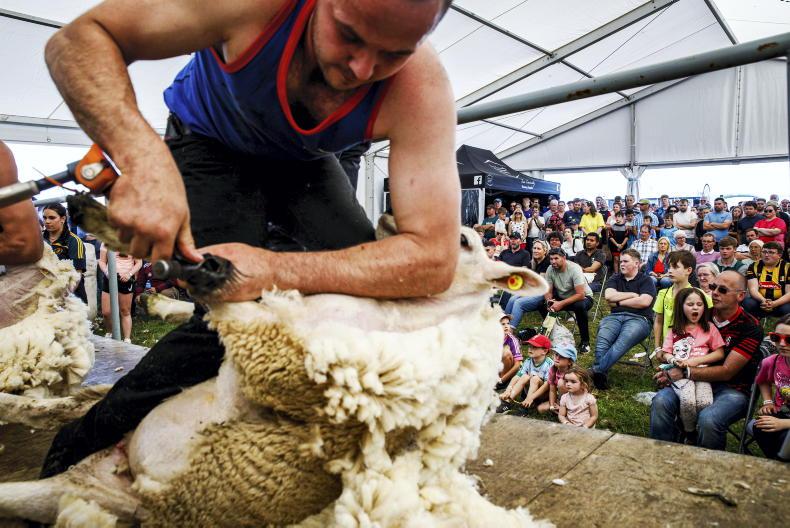
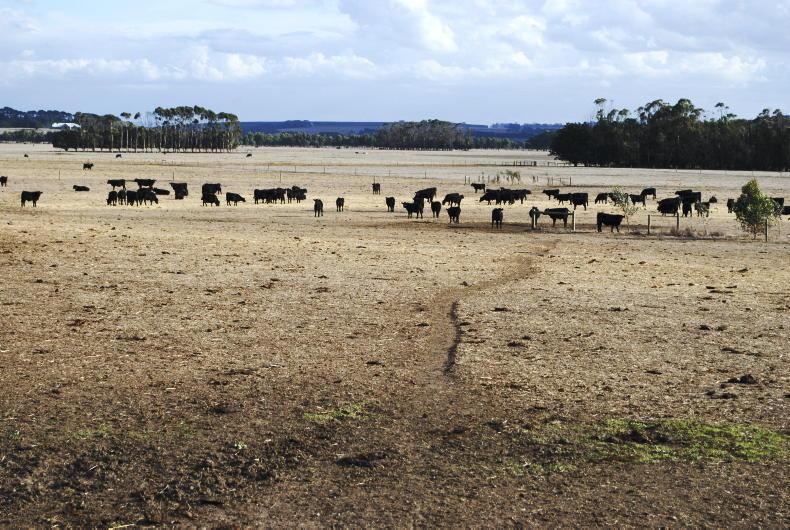
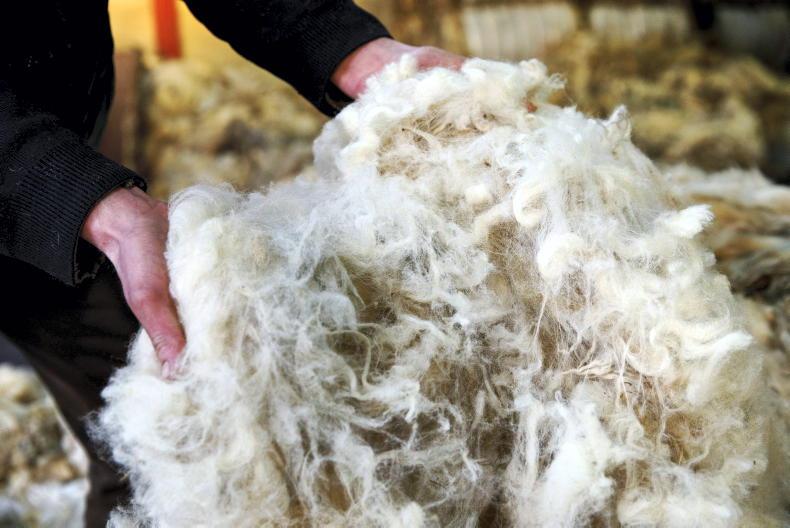
SHARING OPTIONS